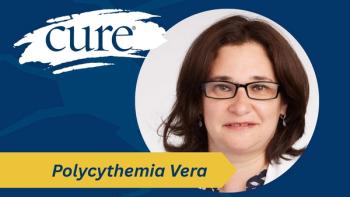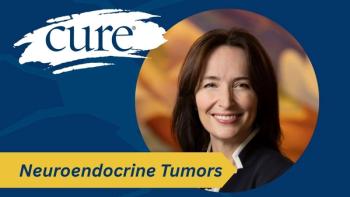
Part III: How GIST and I Became Acquainted
The medical team had reached some conclusions.
This is the third part of my story. Read the
I have a hole in my heart. This finding came from the bubble test administered during my (very) brief stay on the neurology ward. That day began in the critical care unit (CCU), with my team focused on moving me out of there to make room for other, more extreme cases.
I was wheeled up to the fourth floor/neurology unit and settled into an open room with several other beds and a couple of nurses. Since I had not brought any of my vast collection of books with me, boredom quickly set in. In my determination to emulate a regular human being again, I left my bed and headed for the nearby bathroom, where all went well until I stood up to leave. The room swam as I crumpled toward the floor, grasping a plumbing pipe on my way down. I remember a fleeting thought that I could hold myself upright. Wrong. The next thing I knew, a crew of nurses had rushed in and led me back to my bed, which was quickly surrounded by a team of doctors. One by one, they had me raise my arm, touch my nose, smile, speak, wink and do all of the tests necessary to determine whether my fall had signified another stroke. I passed the requirements and though there were doubters among them, I was convinced that I had fallen due to dizziness from the many medications I was being given.
To be on the safe side, they wheeled me back down to the CCU for another few days.
Back to the hole in my heart, which is technically referred to as a patent foramen ovale (PFO). It is a condition most of us are born with — the hole generally closes on its own. Apparently, mine had failed to do so and became the prime suspect in the search for a perpetrator of the clot blocking off a sizeable section of my brain. When I later saw one of my MRI films, I named that area, “the dark side of the moon.” Good thing I started out with some spare brainpower (thanks, Dad) ...
If you have a hole in your heart, it is conceivable that a blood clot can float up your leg into one chamber of your heart and then travel through the hole into the other chamber, gaining toll-free access to your blood highway to the brain. Was that why I’d had an embolism in my brain? No one knew, and thankfully, a decision was made not to subject me to the surgical procedure necessary to close the hole, after all that had been done up until then. I suspected that whoever made that decision had caught a glimpse of my six-inch high chart.
Another important finding came to my attention quite by accident, when a new (to me) DO stopped by and casually dropped the fact that I had a cancerous tumor in my abdomen. What? He probably thought someone had already given me the results of the endoscopic biopsy, and realized, when he saw the look on my face, that no one had. That was both a startling and mind-numbing way to learn that I had “it.” Then again, is there an easy, good way to learn that you have cancer? Probably not.
One of the residents on my case got wind of this development and stopped by to fill me in. The team had originally suspected that my abdominal mass was a pheochromocytoma. This difficult-to-pronounce tumor is a malignant, feisty mass that throws out plenty of adrenaline while in residence, which could have explained my extreme hypertension. The fact that such tumors often present with high blood pressure was enough to excite the team into thinking they may have reached a final diagnosis, albeit one that meant a difficult surgical removal lay ahead. The idea I got from discussions with doctors was that it was better that my tumor was not a pheochromocytoma. I guess it is a difficult one to remove successfully, based on its aggressive and unpredictable behavior when disturbed — reminds me of a cat I once had.
Instead, my final diagnosis was that my abdominal area was hosting a large, gastrointestinal stromal tumor (GIST). It was estimated to be about 17 centimeters at its largest part. The next question was, how had I not noticed this? A recent physical by my thorough PCP had yielded no clues as to its presence. The most likely answer was that I had been carrying some extra weight, and stomach-area GISTs tend to be sneaky and hide behind other organs. Whatever the reason, I had no idea that it lurked within, so had I not experienced multiple strokes, the chances are high that it would still be with me, slowly, stealthily growing. Thus, the stroke experiences had their own silver lining.
Another (disputed) finding pertained to my strokes. One doctor had persisted in telling my neurologist that he suspected vasculitis as the cause, but my neurologist was adamant that this was not so. I think he was right, because I’d had untreated high blood pressure and high cholesterol for quite some time. It’s a wonder I didn’t lose sleep from the tick, tick, ticking of my internal time bomb(s).
Now that the mass in my abdominal area had been given a name, it was time to formulate a viable action plan. Because I was on a serious blood thinner (Coumadin) designed to keep me from having more strokes, the challenge for the team was to figure out how to transition me from stroke patient to a surgical cancer patient without missing a step and inadvertently sacrificing the patient. Much discussion ensued and I could tell by the growing pods of young residents who dropped in at all hours that this conundrum was attracting a great deal of attention. One of the medical students even suggested that I was fortunate to have such a complex case, because it was garnering all sorts of extra focus and interest from various facets of the hospital’s medical resources.
All I knew was that I wasn’t getting any sleep and on the plus side, I was lonely no more, now that I had people dropping in morning, noon, night, as well as during the wee hours, to prod and poke me while asking now-familiar questions.
There was a tremendous pool of medical knowledge among my team, so when they came to tell me their plan, I was not surprised to learn that they had figured out a way to safely wean me off the blood thinner before surgery, then transition me back on it in a way that would keep me from having more strokes, without first bleeding to death. I viewed that concept with an abiding sense of hope, and awe.
Next up: Am I in a hospital, or did I hop on the “wayback machine" to Big Sur in 1970?
Please continue to follow my story here:





